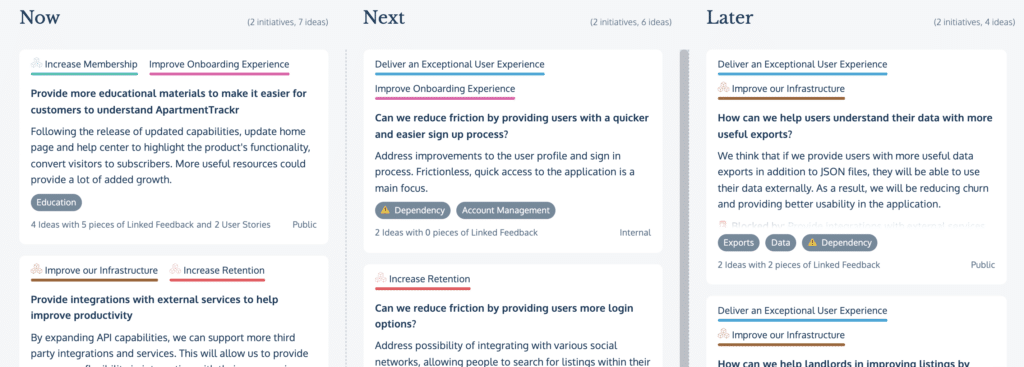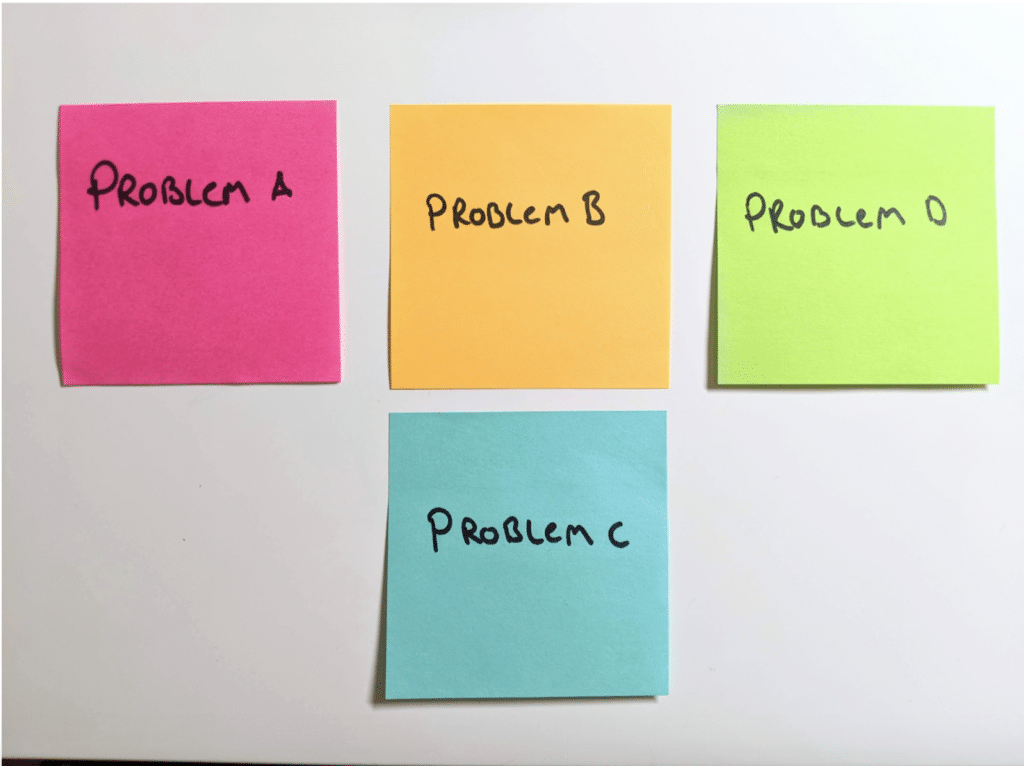Building a Product Roadmap: Your First One Shouldn’t Be Perfect!
Getting started with building your first product roadmap is daunting. I know this because I coach people through it all the time.
They are often faced with this mental roadblock of wanting to craft this perfect, complete roadmap that articulates their strategy perfectly and struggle to take the first steps towards creating anything at all. We’ve all been there!
It’s why I often include a caveat when I’m showing people through our demo and Sandbox environments of ProdPad. The pre-made roadmaps are too good. After all, these are demo environments, and we’ve been iterating on these for months and years.
You’re not being fair to yourself if you expect to be building a product roadmap like that straight out of the gate. In fact, your first roadmap shouldn’t look like this:

Instead, I’d be proud if your first roadmap looked something like this:

Why? Because a roadmap is a prototype for your product strategy.
As simple as you can articulate and test. And in the case of a product strategy, that’s usually outlining some key problem areas or opportunities you think are noteworthy, and laying them out in the order you think they should be tackled.
That’s your first roadmap.
Is that what you’re going to go DO and build now? Oh hell, no! That would be incredibly presumptuous. On par with taking your back-of-napkin sketch of an untested idea and ordering a developer to go build it.
Your first roadmap is just the beginning
That first product roadmap is a starting point for learning. Now that you’ve laid out your assumptions, you’ve got a handy way to check them with other stakeholders and see what holds water or not.
And your first roadmap is going to be imperfect. Your stakeholders are going to pick holes in it. Product managers need to have thick skin for exactly this reason. You’re not here to be right. You’re here to facilitate the discussions to get us all to better.
Over time, and over the course of lots of useful and enlightening discussions, you’ll start to unpick what the real problems and opportunities are, and what order your team can tackle them in to be most likely to achieve your objectives and reach your ultimate vision. Over time, you’ll iterate on your roadmap, and move from the hot mess you started with, to a cohesive strategic plan.
It’ll become more granular and useful to a wider range of stakeholders. It’ll be more robust, as more and more eyes and brains from around the organization sense-check it. And It’ll look more like the roadmaps we showed you in your ProdPad demo when you first got on board.
It’ll never be 100% perfect though. That’s a bit of control that we’ve all just got to let go of. After all, we don’t have perfect information, so we can’t craft a perfect plan.
It starts with picking the right format!
Our go-to here at ProdPad is the Now-Next-Later roadmap format because it has that sense of imperfect information built right in: You’ve got higher granularity of information about things right in front of you, and less for things further and further out on the horizon.
Your roadmap is meant to have this flexibility built in so that as you learn, you adapt. Your roadmap flexes and is updated based on new information, and so what was considered the best roadmap for the information of the time is set aside to make way for a constantly iterated version of that roadmap, always showing the best version for the information at hand.
So always remember: Your first roadmap is not going to be perfect. Far from it! Embrace the fluidity of the imperfect assumptions, nowhere near set in stone.
Your final roadmap won’t be perfect either. It’ll just be the best representation of what you know at the time, which should be informed by all the insights and inputs you have access to as a well-connected product manager.
Let go of perfect. Get roadmapping instead.

